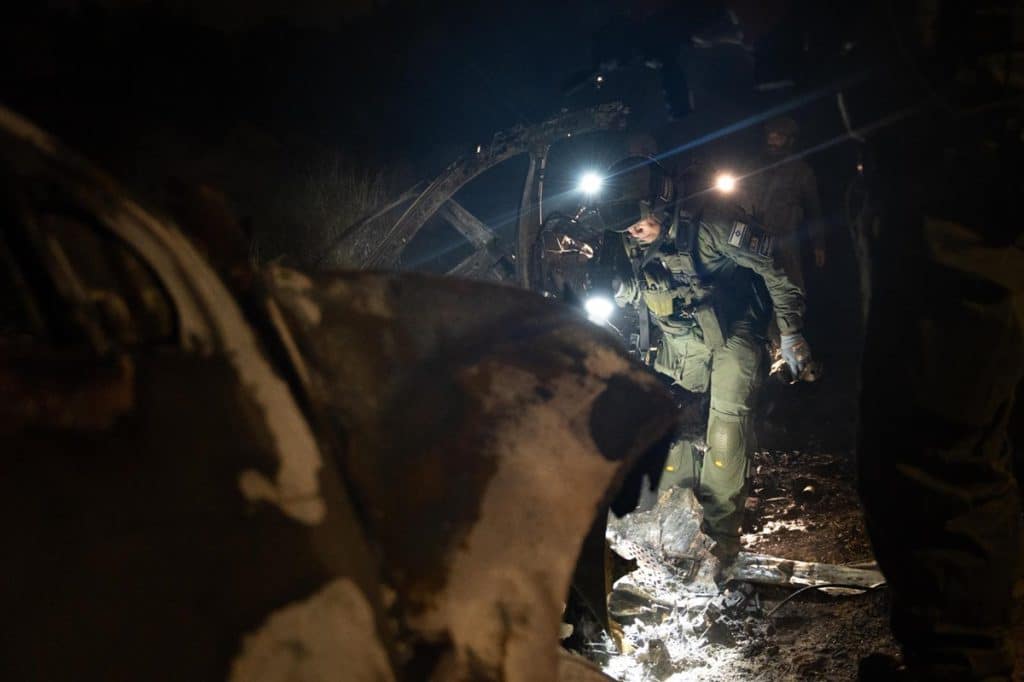
Overview
- Bodies of 6 hostages were found in a tunnel in Rafah less than a Kilometer away from the location that Farhan Qadi, another hostage was found earlier in the week. The hostages are: Hersh Goldberg-Polin, Ori Danino, Eden Yerushalmi; from bottom left, Almog Sarusi, Alexander Lubnov, and Carmel Gat.
- The Israeli Security Cabinet affirmed the necessity of maintaining the IDF presence along the Philadelphi corridor during any potential ceasefire agreement.
- Israeli forces freed hostage Farhan Qadi during an operation in Hamas tunnels in southern Gaza.
- The body of a soldier who was killed defending the Gaza envelope communities on October 7th and subsequently kidnapped, was recovered.
- Brigadier General, Elad Goren, who previously served in COGAT was appointed to a similar role as the head of the Civil Administration in the Gaza Strip.
- The 98th Division completed its operation between Khan Yunis and Deir al-Balah and withdrew from the Gaza Strip. Between August 9 and August 30, the division eliminated 250 terrorists and destroyed six tunnels measuring a total of 6 km.
- The Associated Press reported details from an IAEA report dated August 17, revealing that Iran’s stockpile of 60% enriched uranium has increased to 164.7 kg, a rise of 22.6 kg since May. Iran added cascades of advanced IR-6 centrifuges at its main enrichment sites in Natanz and Fordow, although the new ones are not yet enriching uranium hexafluoride (UF6) gas. Iran would only require about 42kg of 60% enriched uranium to theoretically produce sufficient fissile material for the first nuclear bomb. The IAEA’s findings mean that Iran has enough highly-enriched uranium to produce a sufficient amount of 90% weapon-grade enriched uranium within 1-2 weeks and positions Iran as a nuclear threshold state.
- Israel initiated Operation “Summer Camps,” a large-scale operation whose goal is to dismantle terrorist infrastructure in Samaria The operation is focused on Jenin camp, Nur Shams camp, Tulkarm, Far’a camp, Nablus, Qabatiya, and Silat al-Harithiya.
- Two Hamas militants from Hebron attempted to carry out major terror attacks using car bombs which failed to harm Israelis at 2 locations in the Gush Etzion region of Judea. Abdul Hakim, a senior Hamas official, confirmed Khaled Meshaal’s statement that Hamas plans to return to suicide bombings.
- The IDF has uncovered documents from Hamas’s General Security Apparatus that reveal a broad effort by the Hamas to falsify the results of Palestinian public opinion polls conducted by the “PSR” institute. The aim was to create a false impression of larger public support for Hamas, especially following the October 7th massacre.
International
- Qatari Prime Minister and Foreign Minister Sheikh Mohammed bin Abdulrahman Al-Thani met with Iranian President Masoud Pezhskian in Tehran. According to the Iranian news agency IRNA, Pezhskian and Al-Thani expressed their willingness to enhance bilateral cooperation between Doha and Tehran “in all fields.”
- According to reports the Iranian President prefers to postpone an attack against Israel to avoid derailing the possibility of renewing nuclear talks with the West and even favors focusing the attack on what Iran considers Israeli military bases in Iraqi Kurdistan or Azerbaijan. Khamenei supports Pezhskian’s aspirations to renew nuclear talks with the West, essentially buying time until significant parts of the nuclear agreement are due to expire in October 2025, which would strengthen Iran’s economy and prevent the reinstatement of sanctions while advancing its nuclear capabilities. On August 27th, John Kirby stated that Iran is still highly prepared to attack.
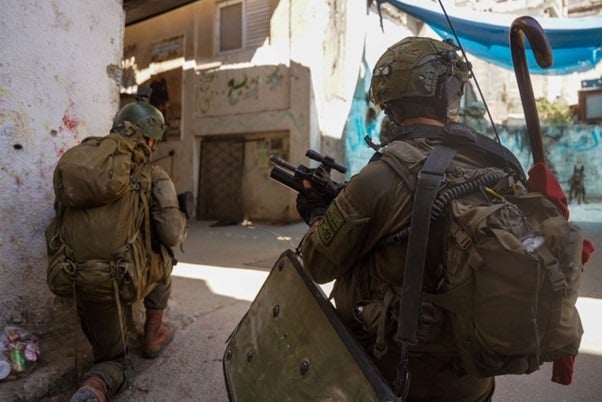
Gaza Strip
Diplomatic
- It was reported that the USAID warned U.S. President Joe Biden that his plan to deliver humanitarian aid to Gaza through a floating dock off the coast of Gaza, faced significant obstacles, including the unfavorable weather and high waves that ultimately doomed the $230 million operation.
- The Coordinator of Government Activities in the Territories announced that polio vaccines for 1.255 million people have been brought into the Gaza Strip through the Kerem Shalom crossing, coordinated with the World Health Organization (WHO) and UNICEF. The coordinator stated that in the coming days, a vaccination campaign will begin for unvaccinated children led by WHO and UNICEF, in coordination with the IDF, as part of the regular humanitarian pauses that will allow the local population to reach medical centers for vaccinations.
- Chairman of the Joint Chiefs, Charles Quinton Brown Jr, met with Chief of Staff Herzi Halevi and Defense Minister Yoav Gallant to discuss the US-Israel strategic partnership countering Iran. Defense Minister Gallant held a phone conversation with US Defense Minister Lloyd Austin, who promised to keep the USS Lincoln and other naval assets in the region indefinitely until the Iranian threat is neutralized.
Hostage Deal
- The Israeli Security Cabinet affirmed the necessity of maintaining the IDF presence along the Philadelphi corridor during any potential ceasefire agreement, which includes deploying sensors to detect future tunnel digging, continuing tunnel destruction, and building observation posts along the corridor. However, there will be a gradual withdrawal over the six weeks of the ceasefire, and the size of the force will be reduced. According to sources who were present during the discussions the maps the IDF drew were adopted by the US as part of the deal.
- Currently, negotiations are ongoing in Doha, Qatar, regarding the potential release of 33 live hostages. If 33 live hostages cannot be found for release, then the bodies of hostages will be released to reach a total of 33. Israel is currently demanding the release of 20-25 live hostages in the first phase of the hostage deal, while Hamas has only expressed a willingness to release up to 12 live hostages. In exchange, Israel is to allow the Gaza Strip to be flooded with humanitarian aid without restrictions to prevent the aid from going to Hamas terrorists, permit medical treatment for Hamas militants in Egypt, and release hundreds of terrorist prisoners, including 150 serving life sentences (these individuals will be exiled and will not be allowed to return to Gaza or Judea and Samaria). Hamas demands that the ceasefire must last for the full six weeks.
- Israel has opposed extending the ceasefire beyond six weeks, which it views as a permanent ceasefire and would effectively end the war, and obligate Israel to withdraw from the Philadelphi Corridor. It is clear that Hamas intends to use the six weeks of cease-fire to strengthen its military capabilities and prepare for the next round of conflict leading to more death and destruction.
- A Hamas delegation, led by Deputy Head of the Political Bureau in Gaza, Khalil al-Hayya, arrived in Egypt for talks with Egyptian and Qatari mediators regarding a ceasefire/ release of hostage deal. Senior Hamas official, Izzat al-Rishq, stated that the delegation emphasized the organization’s commitment to the July 2, 2024 proposal based on the framework of U.S. President Biden and a UN Security Council resolution. The proposal includes a permanent ceasefire, a complete Israeli withdrawal from Gaza, the return of all displaced Palestinians, aid and reconstruction of Gaza, and a “serious” prisoner exchange deal.
- On August 25, Hamas spokesperson Jihad Taha reported that the organization’s delegation to Cairo “listened to ideas and solutions presented to unresolved issues.” He added that the organization would coordinate with other Palestinian factions to form a response from the “resistance.”
- According to a report in the British “Jewish Chronicle,” there is a disagreement between Hamas and other terror factions because Hamas wants to release as many of its prisoners as possible in the deal, while Sinwar supports releasing senior members of other factions to present a facade of Palestinian unity and strengthen his position.

Operational
- Bodies of 6 hostages were found in a tunnel in Rafah less than a Kilometer away from the location that Farhan Qadi, another hostage was found earlier in the week. The hostages are: Hersh Goldberg-Polin, Ori Danino, Eden Yerushalmi; from bottom left, Almog Sarusi, Alexander Lubnov, and Carmel Gat. According to initial assessments they were murdered by Hamas a short time before the IDF found them. The bodies were severely neglected and found with head shots.
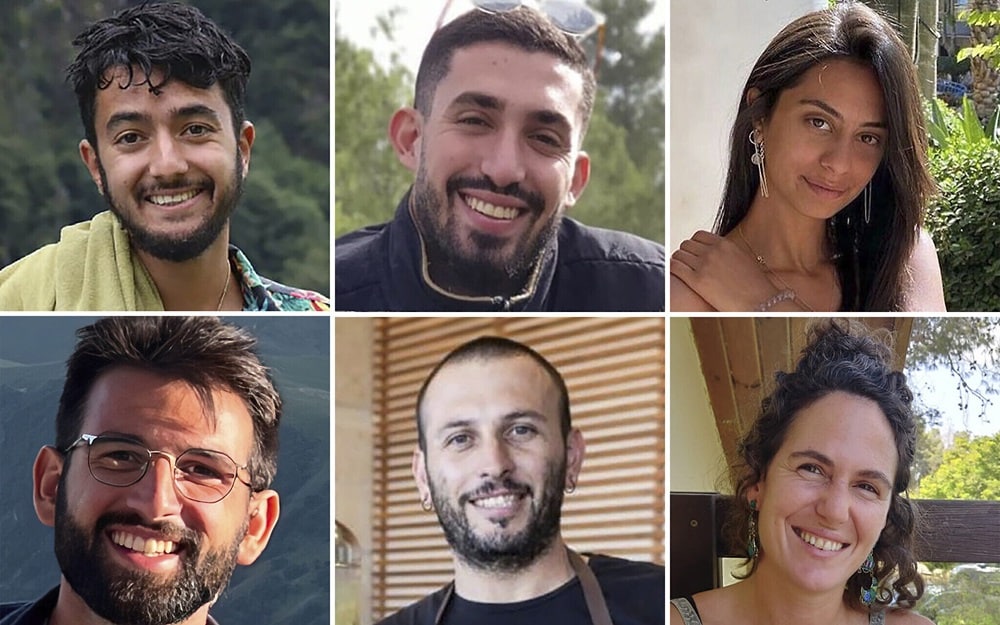
- Israeli forces free hostage Farhan Qadi during an operation in Hamas tunnels in southern Gaza. A team led by Shayetet 13 was searching the tunnels for militants when they discovered Qadi alone in a chamber about 25 meters underground, without guards. Unlike other rescued hostages, Qadi was released without a fight.
- Brigadier General Elad Goren, who previously served in COGAT (Coordination of Government Activities in the Territories), was appointed to an equivalent role as the head of the Civil Administration in the Gaza Strip. His appointment is a step toward formalizing the IDF’s presence in Gaza. He will be responsible for coordinating the delivery of humanitarian aid, managing crossings, controlling the entry and exit of residents and goods, facilitating medical treatment for residents in Egypt, Jordan, and the UAE, as well as organizing the polio vaccination campaign, to vaccinate over a million residents.
- The British Daily Express reported, citing anonymous security sources in Israel, that Sinwar was almost captured on August 14th. He is hiding not in tunnels but among the population, dressed in women’s clothing. He changes his location every 48-72 hours. The IDF received ground-penetrating radar from the U.S., and the Shin Bet, who along with American intelligence agencies, are trying to track him down. Sinwar fears for his life, and as part of the negotiations in Cairo, he has raised the demand for his own survival.
- The IDF has uncovered documents from Hamas’s General Security Apparatus that reveal a broad effort by the Hamas to falsify the results of public opinion polls conducted by the “PSR” institute. The aim was to create a false impression of larger Palestinian public support for Hamas, especially following the October 7th massacre. These documents are part of a systematic process intended to conceal the organization’s pending collapse and the decline in public support.
Gaza City
- A 3 km-long tunnel stretching from the Zaytoun neighborhood to the Johur al-Dik area in southern Gaza City was destroyed. This offensive tunnel could have been used by terrorists for attacks along the Nezarim Corridor. In the Al-Mousader neighborhood, forces are demolishing buildings and gradually destroying terrorist infrastructure.
- IDF forces have been operating in the heart of the Zaytoun neighborhood, destroying terrorist infrastructure and flattening buildings. The 252nd Division has been eliminating terrorist infrastructure, including underground facilities, in this neighborhood since August 23rd.
Central Camps
98th Division’s Withdrawal from Gaza
The 98th Division completed its operation between Khan Yunis and Deir al-Balah and withdrew from the Gaza Strip. Between August 9 – 30, the division eliminated 250 terrorists and destroyed six tunnels measuring a total of 6 km, which included rooms for terrorists and weapons. The destruction of these tunnels was crucial to disrupting the militants’ ability to reorganize. The IDF’s Arabic spokesperson announced that residents are allowed to return to three blocks, restoring the Al-Mawasi area to its original size as of August 9.
The reasons for allowing the return of the population could be due to an expected humanitarian ceasefire to allow for polio vaccinations (Israel agreed to a 3–4-day ceasefire from 6:00 AM to 3:00 PM in several areas of the Gaza Strip for the vaccination campaign). Moreover, the military is experiencing manpower shortages as a result of the transfer of the Paratroopers Brigade to the Jordan Valley, leaving the 7th Brigade alone to operate between Khan Yunis and Deir al-Balah.
Rafah Area
- The body of a soldier who was killed defending the Gaza envelope communities on October 7th and was subsequently kidnapped, was recovered. The body was not retrieved from a tunnel but was buried at an undisclosed location; information about the location was obtained through the interrogation of a captive.
- Satellite images reveal that all houses within 800 meters of the border with Egypt were completely flattened. At the Rafah crossing, an asphalt road is being paved near the ‘Swedish Village.’ So far, 1-2 km of paved road have been laid. This paved road is important for patrols because the asphalt, unlike sand, largely prevents terrorists from planting explosives underneath or beside it.
- The Institute for the Study of War reported a significant decrease in terrorist attacks since August 13th. Between August 19th and 29th, Hamas claimed only nine attacks, largely due to the operation in the Tel Sultan camp. In this area, there are believed to be tunnels used to transfer both weapons and militants from the southern neighborhoods of Khan Yunis and Al-Mawasi.
- The focus of the terrorists is now on disrupting the humanitarian corridor, where aid convoys regularly pass from Kerem Shalom to the European Hospital. A convoy from the humanitarian organization Anera entered the Rafah area, only to be overtaken by terrorists. The IDF successfully neutralized the terrorists, allowing all of the aid workers and humanitarian aid to reach its intended destination. Referring to a separate attack, the “World Food Programme” announced the day before yesterday that it is suspending its operations in Gaza due to an attack on one of its vehicles near an IDF checkpoint.
Lebanon
Diplomatic
- While visiting Israel on August 29, U.S. Secretary of State Antony Blinken expressed support for Israel’s preemptive strike against Hezbollah in Lebanon. According to an anonymous U.S. official cited by the “New York Times,” Blinken urged Israel not to “take the opportunity” to launch a broader operation against the terrorist organization.
Operational
Hezbollah’s Retaliatory Attack Against Israel
Hezbollah claimed responsibility for a combined rocket and drone attack against military targets in Israel in response to the killing of the organization’s military commander, Fuad Shakar, in an Israeli strike in Beirut on July 30, 2024. Hezbollah Secretary-General Hassan Nasrallah stated that 340 rockets were launched at military bases in northern Israel, followed by multiple drones sent deep into Israel, allegedly hitting the Ein Shemer air defense base and the intelligence base in Glilot. Nasrallah warned that if the results were unsatisfactory, Hezbollah reserved the right to respond further. Contrary to Nasrallah’s claims, the bases in Ein Shemer and Glilot were not attacked. Israeli air defense, air force, and navy forces intercepted most of the rockets and drones. The only significant damage reported was to a chicken coop in Moshav Manot.
Social media users in Lebanon and the Arab world mocked Hezbollah’s attack, noting that the most significant damage was to a chicken coop in northern Israel. Analysts sympathetic to Hezbollah argued that the retaliatory attack was intended to maintain the “equation” between Israel and Hezbollah and to avoid a full-scale war. They reiterated Hezbollah’s position that a ceasefire in Gaza would halt the fighting in southern Lebanon.
Nasrallah’s Explanation for the Failure of the Attack
Nasrallah explained that Hezbollah’s response was delayed due to the high alert of Israeli and U.S. forces and the fear of failure. He added that consultations were needed within the “axis of resistance” to decide whether the response would be joint or individual. Hezbollah also sought to give negotiations for a Gaza ceasefire a chance.
Nasrallah claimed that Hezbollah set limits for their response and therefore decided to avoid civilian targets. He added that Hezbollah chose to strike a military target related to the assassination of Fuad Shakar. He also mentioned that the organization had no intention of using strategic missiles at this stage but might do so in the near future. His speech showed signs of Hezbollah wanting to deescalate.
- The 91st Territorial Division, responsible for the Galilee region, completed a defensive drill this week simulating a ground invasion from Lebanon and the defense of local communities.
Judea and Samaria
Diplomatic
- Saudi Crown Prince Mohammed bin Salman met with Palestinian Authority President Mahmoud Abbas in Riyadh, discussing the situation in Gaza. Bin Salman confirmed Saudi Arabia’s support for the Palestinian people and stated that efforts would continue with international and regional actors to stop the escalation.
- A meeting was held in Ramallah by the committee preparing for Palestinian Authority President Mahmoud Abbas’s planned visit to Gaza, where he intends to meet with senior Palestinian leadership. The meeting, which included PLO Executive Committee Secretary-General Hussein al-Sheikh, focused on the preparations needed to achieve the visit’s goals, primarily stopping the “ongoing aggression” against Gaza and the immediate and complete withdrawal of Israeli forces. The committee decided to establish a preparation team for practical political and legal action, to garner Arab, Islamic, and international support, and to ensure the backing of the UN and its institutions. It was also agreed to maintain contact with Hamas’s political bureau leadership and other Palestinian organizations to coordinate joint actions for advancing the initiative.
- The U.S. State Department imposed sanctions on the “Shomer Yosh” an NGO which also serves as the security coordinator for the Israeli town of Itamar, accusing them of supporting violence against Palestinians in the region.
Operational
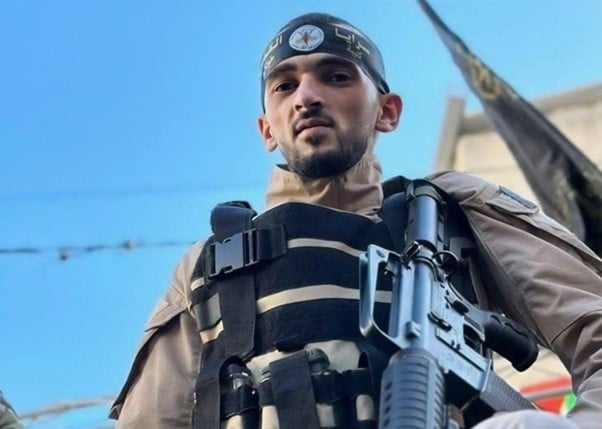
“Summer Camps” Operation
Israel began a large-scale operation in Samaria to dismantle terrorist infrastructure that has been building there, culminating in three attempted suicide bomb attacks. The operation is focused on the ‘refugee camps’ in Jenin, Nur Shams Tulkarm, Far’a, Nablus, Qabatiya, and Silat al-Harithiya. In the operation, the head of the Islamic Jihad’s military wing in Nur Shams/Tulkarm, Muhammad Jaber (“Abu Shujaa”), was killed by Israeli forces. The operation, involving Yamam (Israeli SWAT), Shin Bet, and IDF forces, targeted five militants hiding in a mosque in Tulkarm. Muhammad Jaber was responsible for numerous attacks, including the June shooting that killed Amnon Mukhtar. Another terrorist was also arrested.
An IDF summary of the 72-hour operation in Tulkarm and Jenin was published, reporting that at least 20 militants were killed, and 17 wanted individuals were arrested. The commander of the 906th Battalion of the IDF’s Basic Training Brigade stated that militants are taking over refugee camps and turning them into terrorist hubs.
Failed Car Bomb Incidents
Two Hamas militants from Hebron attempted to carry out major terror attacks using two car bombs. One vehicle was detonated at the “Gush Etzion Junction” gas, but a technical malfunction prevented it from causing a deadly explosion. The second vehicle reached the Karmi Tzur settlement, broke through the checkpoint, and was pursued by the security officer, who rammed the terrorist’s vehicle and opened fire, causing the car bomb to explode. These two foiled attacks could have resulted in dozens of casualties.
Hamas is attempting to revert back to its suicide bombing tactics of the second Intifada, thereby opening a larger front in Judea and Samaria. Abdul Hakim, a senior Hamas official, confirmed Khaled Meshaal’s statement that Hamas plans to return to suicide bombings. On August 18, a failed suicide bombing occurred in Tel Aviv, which would have been its first since 2008. This new development is part of the Iranian plot to expand this front in the current war and draw more IDF troops from the Gaza campaign, putting more stress on the IDF’s manpower limitations. Many recent events point to Iran providing guidance, ammunition and training to terrorist groups in Judea and Samaria.
Other
- Zaher Jabarin, head of Hamas’s military wing in Judea and Samaria, issued a threat in an interview against Itamar Ben-Gvir, the Israeli Minister of National Security, in response to Ben-Gvir’s statements regarding the Temple Mount: “He should know that his fate will be like that of Rehavam Ze’evi and all the extremists who attacked our holy sites.” (Rehavam Ze’evi, an Israeli minister, was assassinated by a Palestinian gunman from the Popular Front in October 2001 in Jerusalem).
Iraq and Syria
- American and Iraqi security forces conducted a joint raid in western Iraq, killing 15 ISIS militants. Seven American soldiers were wounded in the raid, according to U.S. Central Command (CENTCOM).
Iran
Nuclear Program Advancements
The Associated Press reported details from an IAEA report dated August 17, revealing that Iran’s stockpile of 60% enriched uranium has increased to 164.7 kg, a rise of 22.6 kg since May. Iran added cascades of advanced IR-6 centrifuges at its main enrichment sites in Natanz and Fordow, although the new ones are not yet enriching uranium hexafluoride (UF6) gas. Iran would only require about 42kg of 60% enriched uranium to theoretically produce sufficient fissile material for the first nuclear bomb. The IAEA’s findings mean thatthe amount Iran currently possesses is nearly sufficient for four nuclear bombs if further enriched, which can easily be achieved. Iran has enough uranium enriched to up to 20% and 60% level, which could be further enriched relatively easily for six nuclear bombs.
This means Iran has enough highly-enriched uranium to produce a sufficient amount of 90% weapon-grade enriched uranium within 1-2 weeks, which currently positions Iran as a nuclear threshold state.
Other
- Former Iranian Foreign Minister Mohammad Javad Zarif announced his return to the position of Vice President for Strategic Affairs, after resigning from the role about two weeks ago.
- The Iranian Chief of Staff reiterated on Wednesday his threat that Iran would strike at the right moment and in a calculated manner.
- The Iranian Foreign Minister, in a conversation with Khalil al-Hayya, who is responsible for negotiations on the hostage deal on behalf of Sinwar (stated that Iran would accept any deal Hamas agrees to.
Fallen Soldiers
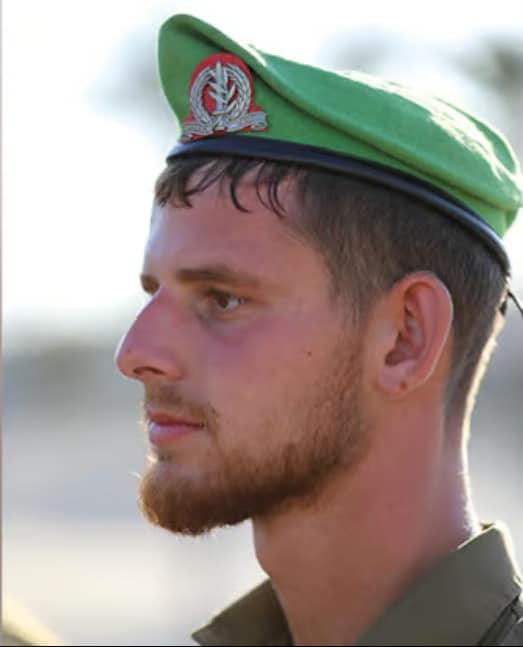


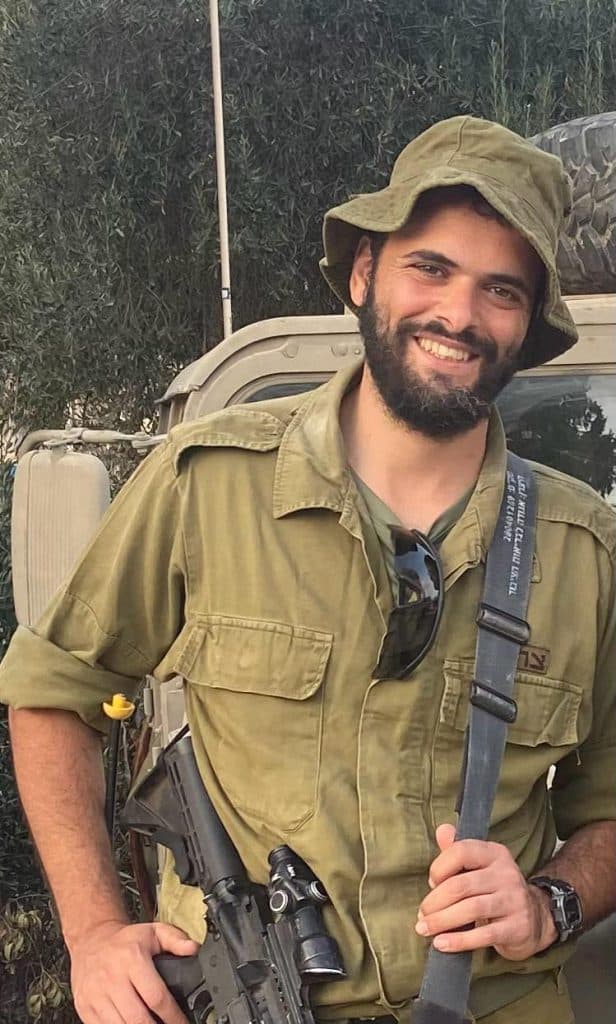
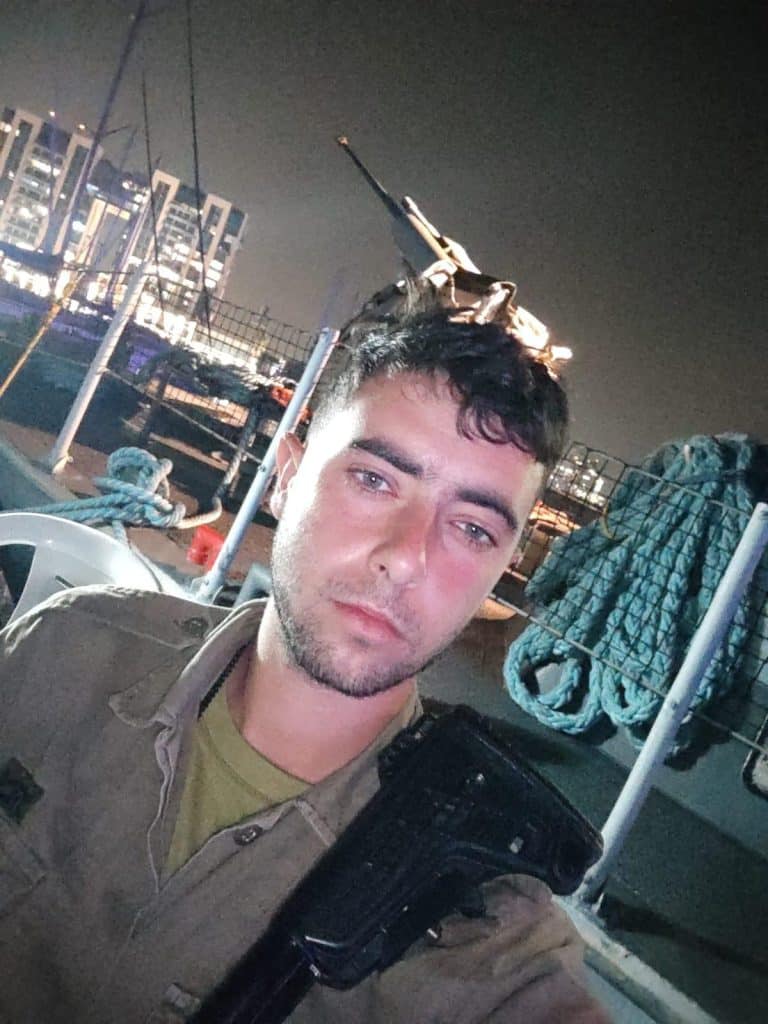
Of Blessed Memory

